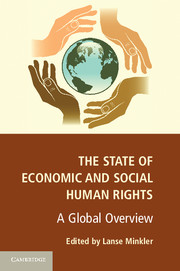Book contents
- Frontmatter
- Contents
- Contributors
- Acknowledgments
- 1 Introduction: Why Economic and Social Human Rights?
- I CORE RIGHTS
- II NONDISCRIMINATION
- 7 The Rights of the Child to an Adequate Standard of Living: Applying International Standards to the U.S. Case
- 8 Achieving Women's Economic Rights, in Policy and in Practice
- 9 Statelessness and Economic and Social Rights
- III META
- Index
- References
7 - The Rights of the Child to an Adequate Standard of Living: Applying International Standards to the U.S. Case
Published online by Cambridge University Press: 05 February 2013
- Frontmatter
- Contents
- Contributors
- Acknowledgments
- 1 Introduction: Why Economic and Social Human Rights?
- I CORE RIGHTS
- II NONDISCRIMINATION
- 7 The Rights of the Child to an Adequate Standard of Living: Applying International Standards to the U.S. Case
- 8 Achieving Women's Economic Rights, in Policy and in Practice
- 9 Statelessness and Economic and Social Rights
- III META
- Index
- References
Summary
A society that possesses sufficient resources for all children and allows some of its children to go without necessary health care, food, and education is failing in its moral duty (Woodhouse, 2008, p. 40).
Introduction
The idea that children have economic and social rights has been articulated in international law since the 1920s, when the Geneva Declaration of the Rights of the Child was drafted by the League of Nations (1924) and the International Labour Organization created standards for child labor. The landmark children's human rights treaty, the UN Convention on the Rights of the Child (UN CRC 1990) underscores that children are rights bearers, despite not having reached the age of majority for full citizenship. Thus, the full range of human rights, including social, economic, cultural, civil, and political rights that states are obligated to respect, protect, and fulfill for adult citizens, are also to be accorded to children.
State ratification of the CRC is nearly universal, and efforts to implement the treaty at the country level have been considerable in the past twenty years (Todres 2011). Yet, neither the Committee on the Rights of the Child nor state parties to the CRC have adequately addressed the question of children's economic and social rights and eliminating child poverty as a core obligation of states. In the past few years, however, interest has grown among children's rights advocates and the Committee on the Rights of the Child to address children's rights to an adequate standard of living.
- Type
- Chapter
- Information
- The State of Economic and Social Human RightsA Global Overview, pp. 175 - 203Publisher: Cambridge University PressPrint publication year: 2013

